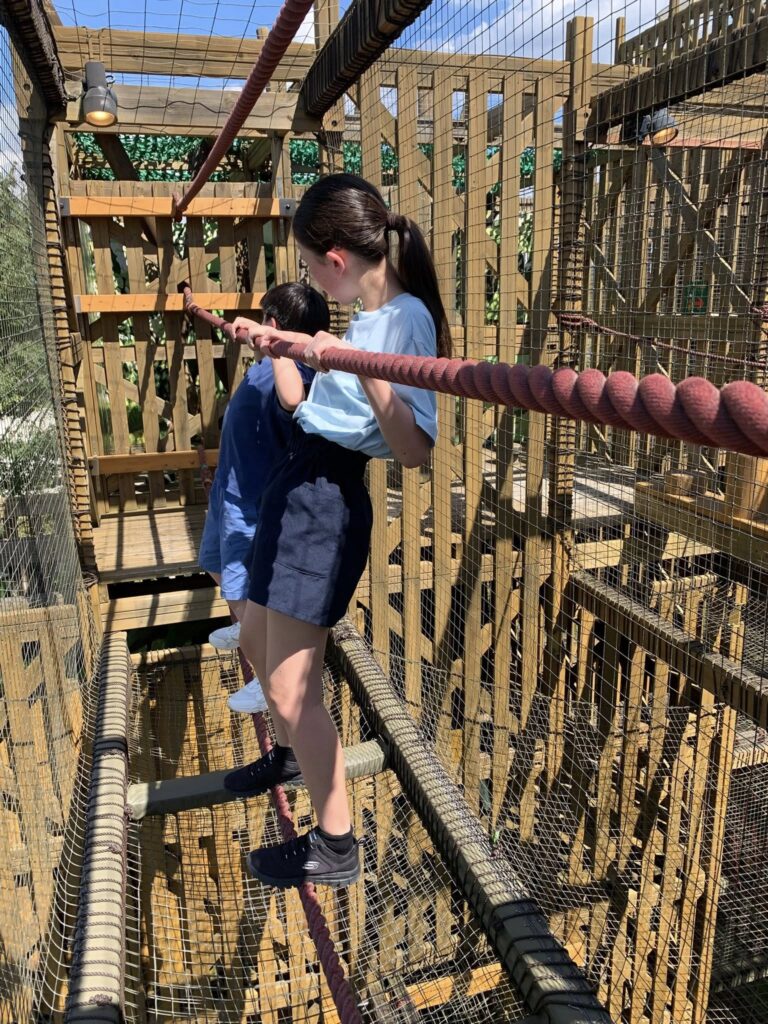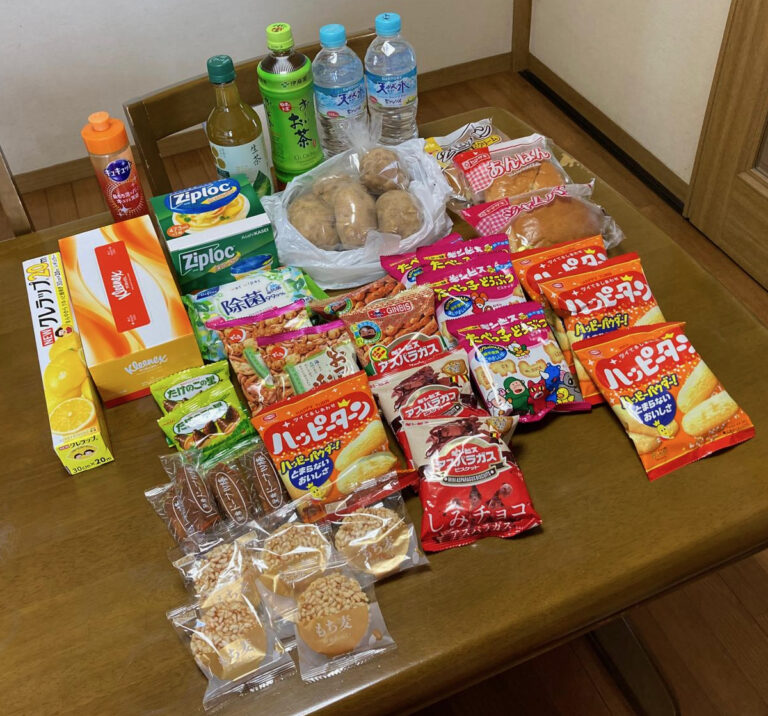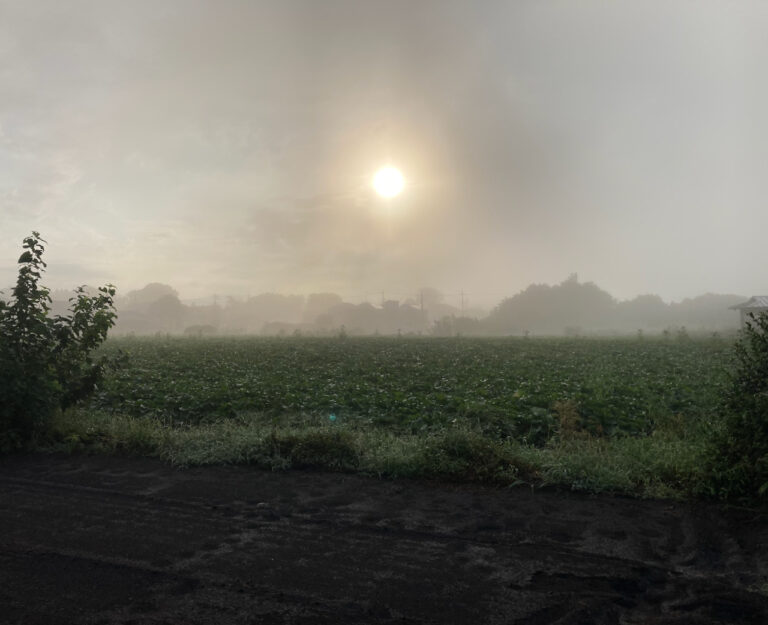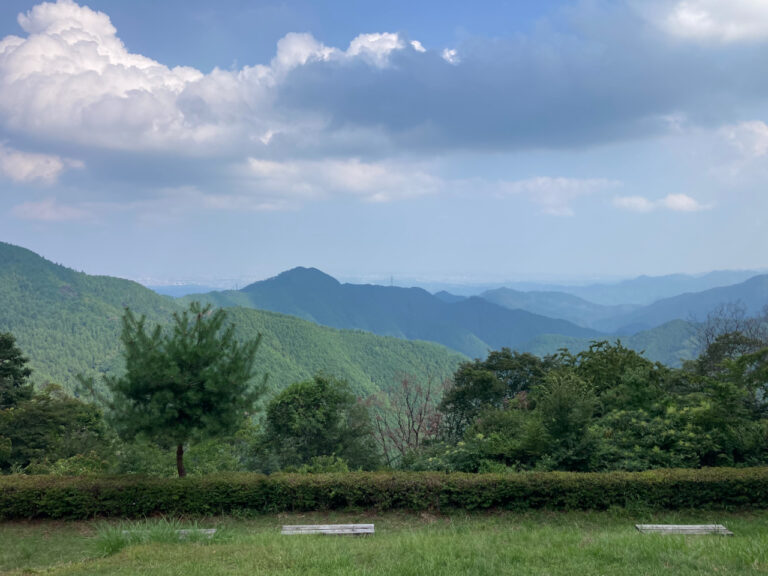
Instead of our usual trip abroad, this summer we’ve been taking various day trips, treating ourselves to restaurant and takeaway food, and generally keeping things closer to home. After visiting Spa Resort Hawaiians (not in Hawaii, I might add) a couple of weeks ago, this week we went to Mobility Resort Motegi, or as it used to be known, Twin Ring Motegi.
Mobility Resort Motegi mainly functions as a racing circuit – particularly for motorbikes – but also has a theme park, and even though it’s only about 45 minutes’ drive across the border in neigbouring Tochigi Prefecture, we had never been there before. This is partly because it’s slightly more expensive than, for example, Hitachi Seaside Park, which is the same distance in the other direction, and a telling detail is that almost all of the cars in the car park were from in and around Tokyo. Not only that, but the drivers and their passengers were noticeably more stylish and sophisticated than the kind of folk you normally bump into at events and tourist spots in Ibaraki, which is renowned for being populated with country bumpkins.
The previous day there had been a firework display and when I checked, the tickets were fully booked, but our timing may well have been perfect because many of those who watched the fireworks had stayed the night in the on-site campgrounds and hotel, and were probably packing their things and preparing to head home when we arrived at 9:15 in the morning. The theme park opens at 9:30 and I wanted to get in as early as possible, with the aim of booking us a slot on one of two zip lines. The longer of these takes about 90 minutes to complete and involves circumnavigating the site in multiple stages. Also, M Jr II isn’t tall enough to be eligible for it (at less than 140 cm, he’s also not tall enough to ride the go-carts – I’ve promised that we’ll return when he is). The easier zip line is called Tsubasa (‘wings’) and has more lenient height and weight requirements, although a girl in the queue ahead of us had to gulp down the rest of the water in her flask in an attempt to gain the extra 100 g she needed to reach 30 kg (a zip line is of course dangerous if you’re too heavy, but if you’re too light, you may not generate enough momentum to reach the other end).
After a quick dash to the toilets, we hurried to the Tsubasa reception cabin and were standing outside by about 9:45. There was a minor hitch when we realised that I needed to exchange the e-ticket on my smartphone for a physical version, but we still managed to get a place in the first block of bookings, and it was well worth the effort. Not too scary, too high, or too fast, but exciting, fast, and high enough that as a family, we pretty much justified the price of our all-day, all-you-can-ride passes right there and then. Having been fitted with harnesses, helmets, shoe straps, and other bits and bobs, we listened to a short explanation about safety before walking up the hill to the departure point to be attached to the wire and sent on our way. There are, in fact, two stages to Tsubasa, and for some reason, you are advised to bend your legs squat-style for the first and keep them straight for the second. However, it’s important to keep your arms straight for both, as the recoil when you reach the end of the wire and are slowed down by a special brake fitment-type doobery is genuinely forceful – allow your arms to bend and your head may bash into the wire.
The next attraction that we queued for was an indoor playground of nets, trampolines, tunnel slides, and the like. As the waiting dragged on, we very nearly gave up, and in the event, it was perhaps slightly disappointing for M Jr I and II, who are now 13 and 11, while the target audience is several years younger. After about 30 minutes in the queue and another 20 sitting in a kind of mini-arena, there was a brief explanation from one of the staff members, who tried his best to sound both excited and exciting, but had the distinct aura of a university student who has just started their first summer job. Although the playground was aimed at smaller children, it was more dangerous and more painful than the zip line, as I sustained fibreglass burns on one of the tunnel slides and M Jr II scratched his knee on one of the trampolines. This being Japan, we were expected to take off our shoes before entering, and the climbing nets were surprisingly hard to negotiate pain-free. What with that, a slippery painted concrete floor, and lighting subdued enough that it was hard to see what was going on, I wonder if the resort has been subject to claims for damages from smaller, more vulnerable users who have injured themselves in similar ways.
Perhaps the best thing about the indoor play area was the air conditioning, and when we emerged once more into daylight (there were no windows in the indoor playground, either), the temperature had clambered its way into the thirties. In an effort to save money, and in the same way as we had at Spa Resort Hawaiians, we stopped at a 7-Eleven in the morning to buy rice balls, sandwiches, and in my case salad, a tofu stick, and a bag of ikari (deep-fried broad beans, to which I will soon dedicate a stand-alone blog post), and had lunch at a parasol-shaded picnic table.
When I was a child, my grandmother took us on a family day out to Hampton Court, where we negotiated the famous, hedge-based maze. This was fun and challenging in its own way, but I’ve always been interested in the three-dimensional mazes that are a feature of many Japanese theme parks. This time last year we had a grand day out at Nasu Highland Park, which is further northwest in a more mountainous part of Tochigi, and were so busy enjoying the rollercoasters that we didn’t have time to tackle the 3D maze. Mobility Resort Motegi is blessed with not one but two such mazes, and we entered Dokidoki, which is the smaller of the two, first.
This was a four- or five-storey structure made almost entirely of wood, with climbing walls, ropes, wobbly wooden bridges, and various other features designed to make it hard to negotiate, although there were several places where you could choose to take different paths marked with either one, two, or three acorns to denote increasing levels of difficulty. Apart from some monkey bars and an unfeasibly narrow, Ultimate Ninja-style ledge that only the most agile of visitors would be able to dangle from and probably should have been allocated four acorns, the route that we took was about right and involved a great deal of climbing, ducking through low doorways and climbing over fence-like obstacles. This was more exercise than M Jr I had engaged in for several months. It was also hot and sweaty as a sauna, and we retreated to the air-conditioned luxury of the indoor playground so that she could rest and rehydrate.
By now it was time for our customary mid-afternoon snack, and since the ice cream machines were sold out of all but a single variety (macadamia nut, which neither M Jr I or II was interested in eating), we contrasted our cheapo lunch with some café-bought, expensively priced, air-conditioned gelato.
On the Mobility Resort Motegi website, there is page telling you about current waiting times for the various rides, and at two o’clock on a Friday afternoon, top of the charts at 90 minutes was a mini-motorbike training school. M Jr II is just about young enough that – 90-minute wait notwithstanding – he could have had a go, but M Jr I may have broken the bike, so our one remaining experience was the larger of the two mazes, Itadaki. This turned out to be slightly disappointing, even though it was more of an authentic maze than Dokidoki, in the sense that the potential existed for getting lost and failing to complete your task, which was to mark a scorecard with multiple rubber stamps as you worked your way from the first to the fifth storey.
Having collected the final stamp, you could either descend to ground level by a staircase or do so via a long spiral tunnel slide. Given the pain from my elbow and knee burns, perhaps I should have known better, but decided to take the slide while Mrs M and the kids did the sensible thing and used the stairs. (The other minus point about Itadaki was the fact that, rather than completing it as you would a round of golf, with one group of players in front and one behind you, it involved so much to-ing and fro-ing that we were constantly bumping into other families and having to squeeze past them as we headed in opposite directions.)
Tickets for the four of us cost nearly ¥20,000 (about 100 GBP), and I had been hesitant about booking online because the weather forecast was for possible thunderstorms from mid-afternoon. In the event, the heavens opened just as we were walking back to our car after a final detour to the souvenir shop, which among other things sold official Honda T-shirts, Tomica toy cars, and chocolate wafer biscuits designed to look like – I kid you not – asphalt on a racing circuit.
As opposed to Spa Resort Hawaiians, we hadn’t really escaped the heat, but we did manage to squeeze value for money out of our day tickets. The following evening we went to a firework display back in Ibaraki, which was free to enter and filled with the kind of country bumpkins we’re more accustomed to mingling with.



